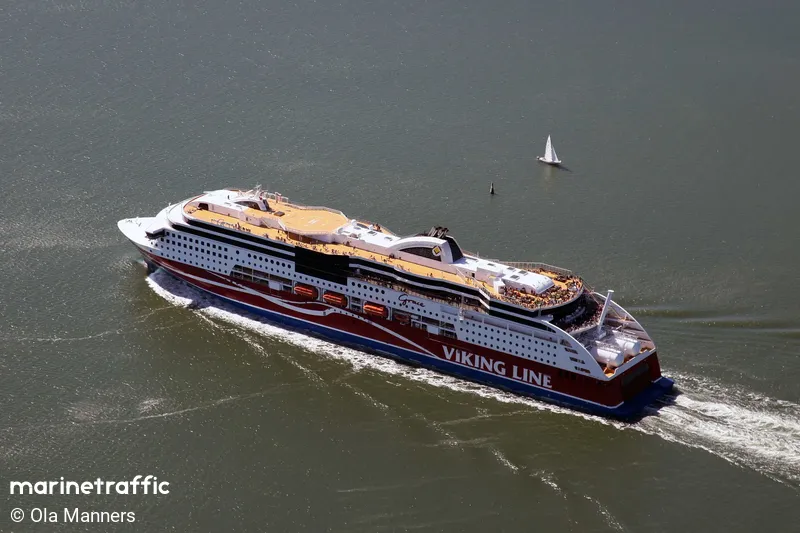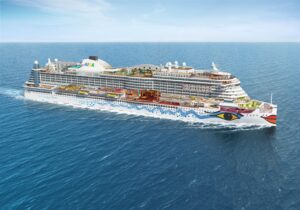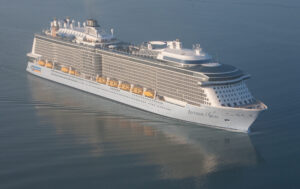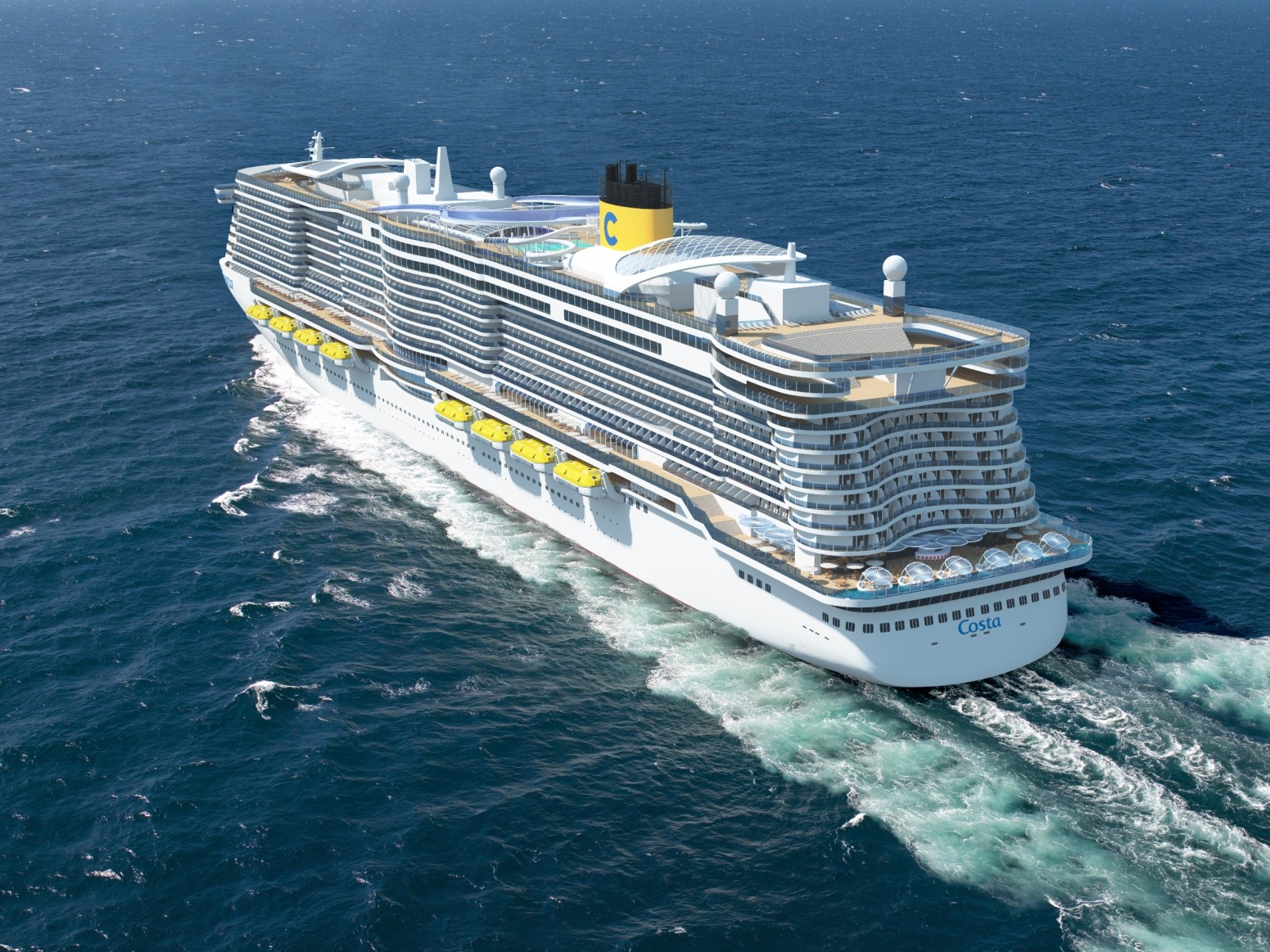There has been a lot of talk about LNG and fuel cells as use on cruise ships, but what does it actually mean.
BACKGROUND
Thus far, there have been some small ferries, riverboats and some offshore supply vessels that have fully made the switch over to LNG. There aren’t any 18,000teu container ships or 250,000dwt oil tankers running off of cleaner gases yet. Ironically, while LNG carriers can run some LNG ‘boil off’ through their engine, it’s not their main fuel source. Cruise lines are taking the initiative among major shipping companies in trying to go green.

All this in an effort to slowly transition away from the heavy polluting bunkers (aka marine grade diesel oil, fuel oil.) By burning LNG you won’t get any sulfites emitted and only oxides (carbon dioxide being the big one). However, that CO2 is about 25% less than fuel oil.
It seems lately everyone is getting in on the alternate marine fuel bandwagon. Rivals Carnival and Royal Caribbean recently announced their plans to go to LNG but not too much is known to what extend they’re making the switch. Lets take a look at current methods and some of the alternative fuels they’re proposing.
ECA Areas
In a more recent attempt to curtail the pollution of sulfites in the US, the EPA officially designated all offshore waters in the United States to be declared ECA areas. Environmentally Controlled Areas are meant to create a cleaner air zone in and around the ports. Any ship sailing into ECA designated waters must burn low sulphur fuel oil. Due to the extra processing that goes into refining bunkers to be low sulphur and the scarcity of the worldwide supply of it, it’s costing ship owners a fortune to sail to the US. Cruise lines have gotten around this by installing ‘scrubbers’ on all their ships so that while they can still burn the cheaper stuff, their exhaust is similar to low sulphur bunkers. A decent first step but more can be done.
Designation of North American Emission Control Area to Reduce Emissions from Ships (PDF)
LNG
LNG (Liquified Natural Gas) starts as a gas called methane. You may hear of the controversial exploratory practice called ‘fracking.’ This is instrumental in getting the methane to the surface. Once at the surface, it’s super cooled and pressurized. It then becomes a liquid and can be transported in very very high volumes. LNG, while unknown to most, is a gigantic industry with a lot of cutting edge technology being used all over the maritime industry. Major players include, BG (now Shell), QatarGas, Engie and Excellerate among others.

An important topic that inevitably comes up when discussing LNG is safety. There’s a lot of security concerns around the safe transportation of it. When LNG tankers sail into most ports, local authorities shut the port down to inbound and outbound traffic. I’ve been at the helm of vessels sailing by a LNG carrier that’s discharging alongside and you’re basically escorted past her by a heavily armed US Coast Guard patrol boat.

All of this is for naught though. An LNG tanker is no more dangerous than an Oil or Product tanker. The volume of the methane in her tanks makes it non-combustible. It’s the equivalent of throwing a match in a bucket of kerosene. What happens; nothing! The volume of the liquid extinguishes the flame. Fossil fuels ignite when they have the right mixture of combustible fluid, oxygen, and an ignition source. LNG only combusts when 5%-15% of methane is mixed with oxygen and ignited by a flame of a certain temperature. Plus, when you unpressurized stored LNG it simply evaporates in a process called ‘boil off.’ If something were to ever happen, the LNG instantly evaporates before it could even combust.
LNG ON SHIPS
It’s important that when in use as a fuel source on a ship, there’s enough room for proper storage. The only application we can only relate this to the Viking Lines ms Viking Grace. She became the largest, and only major passenger ship to be solely powered by LNG. Current regulations, which by no means are thorough enough, call for LNG to be stored away from side walls and above the water line. Basically they must be stored in areas that would be hard to puncture should there be a collision.

In the above photo if we look at the stern we see two large storage tanks and an extra vent pipe. Cruise ships sail longer routes than ferries. Therefore a cruise ship using LNG would need much larger storage tanks so they can last the duration of the cruise. The extra space inevitably cuts into passenger areas. For cruise executives, they would see this as cutting into revenue making areas. A big ‘no-no’ for them.

As it stands today, AIDA’s AIDAprima, and a few other AIDA ships, can currently use LNG as an alternate if they’re able sourced it and bunker it.
In a previous article I discussed these difficulties.
LNG requires an entirely different infrastructure to source as bunkers. From the storage facilities in the ports, to the intra-harbor transport, to the actual refueling process; it’s an entirely different procedure. Mostly because LNG has to be super cooled down to −260 °F for transportation, otherwise, it turns into a gas and evaporates.
This is the current major hurdle that is holding up LNG as an alternative fuel for newbuilds.

FUEL CELL
A fuel cell at it’s core is actually the energy generated by a chemical reaction when running a fuel and oxygen through ceramic plates. When hydrogen is used as a fuel source, the only emission is oxygen (O2).
The process in a very basic sense goes like this:
2H2 + O2 yields 2H2O
Where:
2H2 = hydrogen fuel
O2 = ordinary oxygen
2H2O = two water molecules
As a result of this chemical reaction, elections are produced. When captured, these electrons create electricity.
Instead of Hydrogen, if methane were substituted, you wind up with water and an oxide mostly that’s emitted. Still a pollutant but significantly better than even burning LNG.
Using hydrogen is also part of the problem since it so easily catches fire. Look at the infamous airship Hindenburg. She was using hydrogen as a lifting medium and that combusted in dramatic fashion. Obviously when used in this maritime application, or for any other application nowadays, the storage is much more secure and contained making the process much safer. The volume will also be significantly less. But since it still can easily combust, caution must go into it’s application.
Fuel cells are still in their infancy and everything is insanely expensive about it.
The technology is still not perfected yet and there is a lack of IMO regulations for it as a fuel source. There’s also several different versions of how a marine grade ‘fuel cell’ can be implemented.

FUEL CELLS ON SHIPS
Since it’s still not reliable, and probably won’t be by 2022 when the first Icon ship debuts, I would highly doubt they can use it as a primary fuel source. They most likely will use fuel cells, or a derivative thereof, to power the hotel department of the ship. This would include everything from lights, to machines in the casino, to the entertainment around the pool deck.
Fuel Cells for maritime applications would run off of the ‘cold combustion’ philosophy. Operating temperatures are much lower than a normal combustion engine. Hydrogen combusts fairly easily at low temperatures, so there’s no need to waste energy with high temperature combusting engines.
There have been several small scale demonstrations of it. Mostly by state sponsored ventures to see if it’s possible.

I briefly mentioned it in Royal Caribbean’s announcement.
At a big maritime conference last month in Germany called SMM, Meyer announced they partnered with thyssenkrupp Marine Systems to develop and innovate on existing fuel cell technology for maritime uses.
Royal Caribbean will be studying this on one of their ships next year in a partnership with Meyer Group.
These studies seem to be using LNG as the combusting medium and not hydrogen. LNG would be easier to source than hydrogen and there’s more of it. But if they were to run it off of hydrogen, then it can be extracted from methane, the same from LNG.
A LOOK INTO THE FUTURE
Of course as I mentioned the technology is still in its infancy for both LNG and Fuel Cells. I’ll be sure to update this post in a few years so we can track the progress that was made.
I’m sure we’ll be able to look back on this piece in 10 years time and realize just how different the technology changed and what it actually developed into.


